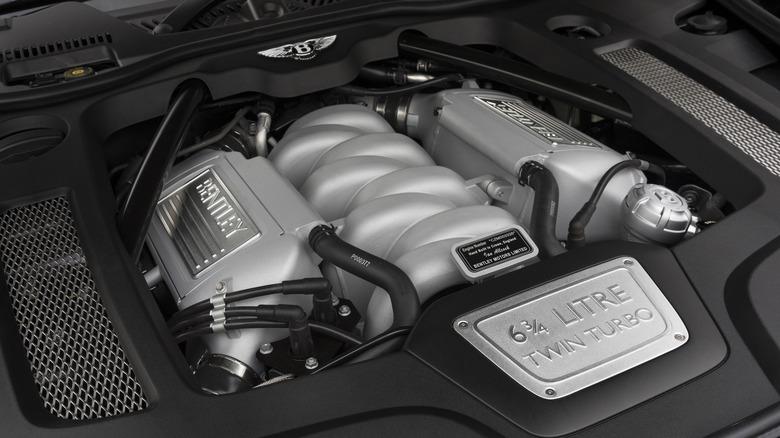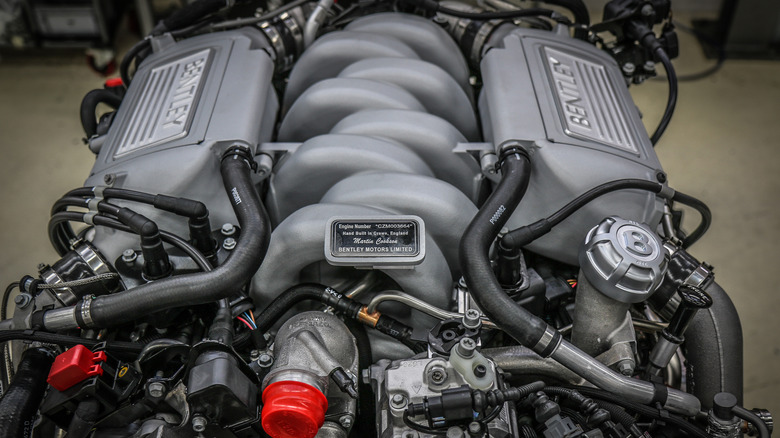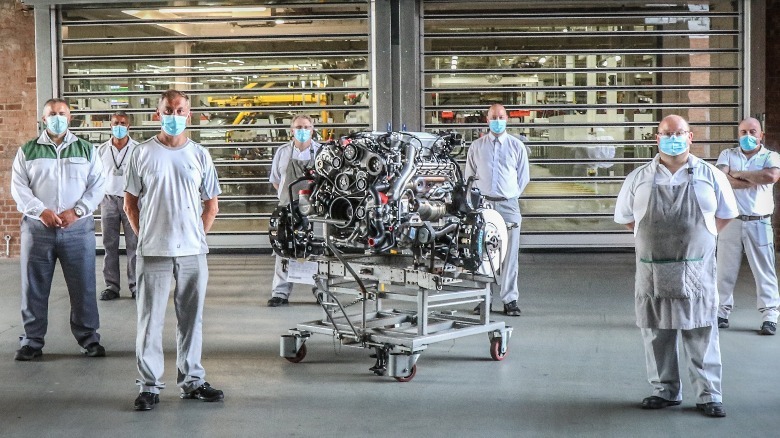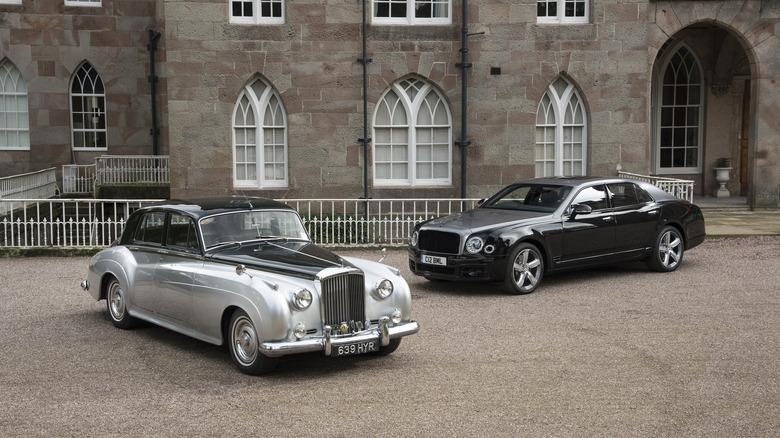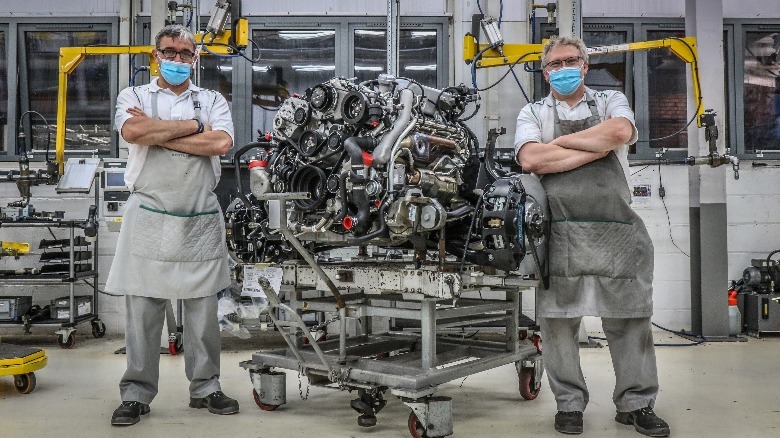Why Bentley Used The Same V8 For Over 60 Years
Automotive technology changes every day and just when you think you've caught up with the latest and greatest, some other groundbreaking piece of info drops in the news cycle. This is especially true when it comes to EVs and today's increasingly more connected cars. Some pieces of automotive technology, however, are the coelacanths of the automotive world, meaning that they will undergo very little (if any) changes over the course of their incredibly long lifespan.
The Ford 300 inline-six is a perfect example. That engine remained largely the same for 30 years until it was discontinued in the 1990s. The Chrysler Slant-6 joins the ranks of ancient engines with a lifespan of almost a quarter-century. One engine, however, outlived them all. That was Bentley's hand-built 6.75-liter V8, known by the company as the "Great Eight." At over 61 years old, the V8 was around longer than some brands' entire histories. Bentley claims it's the longest continuous lifecycle of any V8 in existence.
Gradually evolving technology
According to Bentley, the V8, also known as the L-Series was first birthed in 1959 and sat happily in the engine bay of more than 36,000 Bentleys and Rolls-Royces until it was finally given a farewell in 2020. To put that into perspective, the L-Series engine saw 13 different Prime Ministers take office in its native United Kingdom. That's an incredibly long time for any specific automotive component and positively ancient for an engine that was going into cars built in the 21st century.
The engine started life with a displacement of 6.2 liters and first saw action with the Bentley S2. In that iteration, the V8 made 180 horsepower and the car itself had power windows, air conditioning, and power steering. Those are standard features now on just about any car, but over 60 years ago, driving the Bentley S2 was like piloting the space shuttle. 1971 saw the displacement increase to 6.75 liters. Eventually, in the 1980s, it was given two turbochargers and a few quality-of-life improvements to make the engine pass emissions and safety regulations. During this time, the engine was equipped with modern technology like electronic fuel injection (via Bentley)
That twin-turbo setup, along with even more updates, gave the engine insane amounts of torque, to the tune of over 800 foot-pounds when the 2010s rolled around, according to the automaker.
Six-decades of power
Bentley, to its credit, just never gave up on the engine. Peter Bosch, a member of Bentley's Board of Manufacturing said: "That this engine stood the test of time for so long is a testament to the ingenious engineers who kept making the engine ever more powerful, refined and reliable."
The brand doesn't produce the same volume of cars as say, Ford or General Motors, so it has more than ample time and motivation to fine-tune and add to the engine to allow it to gradually evolve over the decades. It's a classic example of "If it ain't broke, don't fix it." The engine was officially retired after it was used in a super limited run of 30 2020 Bentley Mulsanne 6.75 Editions.
According to Car and Driver, the engine was retired because it no longer met emissions regulations. After six decades, the retirement was well-earned. After the engine's last run, Peter Bosch was quoted as saying: "Now, we look forward to the future of Bentley, powered by our exceptional W12, sporting 4.0-liter V8 and of course our efficient V6 Hybrid – the start of our journey to electrification."
